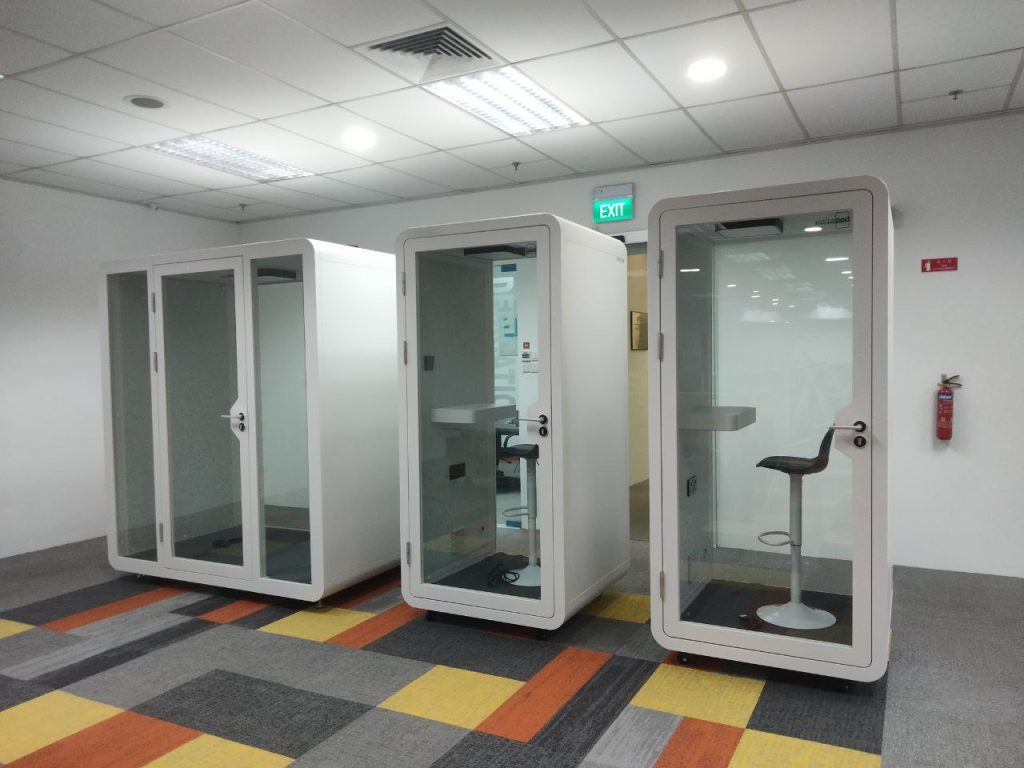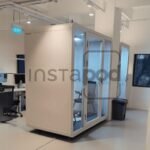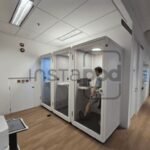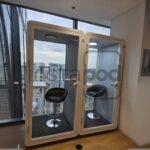No pods added to your quote request yet. Add some now for a free quote!
The Practical Guide to Implementing Office Pods in Your Workplace

In today’s evolving work environments, businesses are increasingly looking for innovative solutions to improve productivity, foster collaboration, and enhance employee well-being. One such solution gaining traction is the office pod—a versatile, modular space designed to meet various workplace needs. Whether it’s for focused work, confidential meetings, or simply a quiet place to think, office pods offer an effective and flexible option. This guide will walk you through everything you need to know about implementing office pods in your workplace.
Understanding Office Pods
Office pods are self-contained units that can be installed within an open-plan office or other work environments. They come in various sizes and configurations, from single-person booths to larger rooms that can accommodate multiple people. Office pods are typically soundproof, offering a quiet space away from the hustle and bustle of the office. They are also designed with ergonomic considerations, providing comfortable seating, proper lighting, and good ventilation.
These pods can be used for a range of purposes, including:
- Private workspaces: For employees who need to focus on individual tasks without distractions.
- Meeting rooms: For small team meetings, brainstorming sessions, or client calls.
- Relaxation zones: Providing a space where employees can unwind during breaks.
Benefits of Office Pods
- Increased Productivity: By offering a quiet space for focused work, office pods can help employees concentrate better, leading to increased productivity. This is particularly beneficial in open-plan offices, where noise and interruptions can be common issues.
- Enhanced Privacy: Office pods provide a private space for sensitive conversations, whether they’re HR meetings, client calls, or confidential discussions. This privacy is often lacking in open-plan environments.
- Flexibility: Office pods are modular and can be moved or reconfigured as needed. This flexibility makes them an excellent solution for growing companies or those that frequently rearrange their office layout.
- Improved Well-being: Providing spaces where employees can retreat and recharge contributes to overall well-being, reducing stress and improving job satisfaction.
Before diving into the implementation process, it’s essential to understand the key benefits that office pods can bring to your workplace.
Space Optimization: Office pods make efficient use of available space, often fitting into underutilized areas of the office. They can be a cost-effective alternative to constructing new walls or separate rooms.
Steps to Implement Office Pods
Now that you understand the benefits, here’s a step-by-step guide to successfully implementing office pods in your workplace.
- Assess Your Needs: Start by evaluating your office’s specific needs. Consider factors like the number of employees, the nature of their work, and the existing office layout. Are you looking to create more private workspaces, or do you need additional meeting rooms? Understanding your requirements will help you choose the right type and number of office pods.
- Select the Right Pods: Office pods come in various shapes, sizes, and designs. Some are designed for single-person use, while others can accommodate groups. Choose pods that align with your needs. Look for features like soundproofing, ventilation, lighting, and connectivity (power outlets and Wi-Fi access). It’s also essential to consider the aesthetic of the pods and how they will fit into your existing office design.
- Plan the Layout: Once you’ve chosen your pods, plan where they will be placed in the office. Consider high-traffic areas, noise levels, and proximity to essential amenities like restrooms and break areas. The goal is to place the pods in locations where they will be most beneficial, without disrupting the overall flow of the office.
- Installation: Many office pods are designed for easy installation and can be set up with minimal disruption to your office. Depending on the complexity of the pods and your office layout, you may need professional assistance. Ensure that the installation process includes setting up power connections, integrating any required technology, and ensuring proper ventilation.
- Communicate with Employees: Before the pods are installed, communicate with your employees about the new addition to the office. Explain the purpose of the pods, how they can be used, and any guidelines for their use. Employee buy-in is crucial for the successful adoption of office pods.
- Monitor and Adjust: After installation, monitor how the office pods are being used. Are they meeting the needs you initially identified? Are employees using them as intended? Gather feedback and be willing to make adjustments, whether that means adding more pods, moving them to different locations, or providing additional resources like training on their use.
Conclusion
Implementing office pods in your workplace is a practical solution to many common office challenges. From increasing productivity to providing much-needed privacy, these modular spaces can significantly enhance your work environment. By carefully assessing your needs, selecting the right pods, planning their layout, and engaging with your employees, you can create a more flexible, efficient, and employee-friendly office.
Office pods are more than just a trend; they are a strategic investment in the future of work. As businesses continue to evolve, having versatile solutions like office pods will be key to staying agile and responsive to the changing needs of your workforce.
Check these out too!
-
 Can Telephone Booth Replace a Private Office?December 5, 2025/0 Comments
Can Telephone Booth Replace a Private Office?December 5, 2025/0 Comments -
 Soundproof Pod: The Quiet Revolution in Workplace DesignDecember 5, 2025/
Soundproof Pod: The Quiet Revolution in Workplace DesignDecember 5, 2025/ -
 How Acoustic Pods Improve Collaboration & FocusDecember 5, 2025/
How Acoustic Pods Improve Collaboration & FocusDecember 5, 2025/

